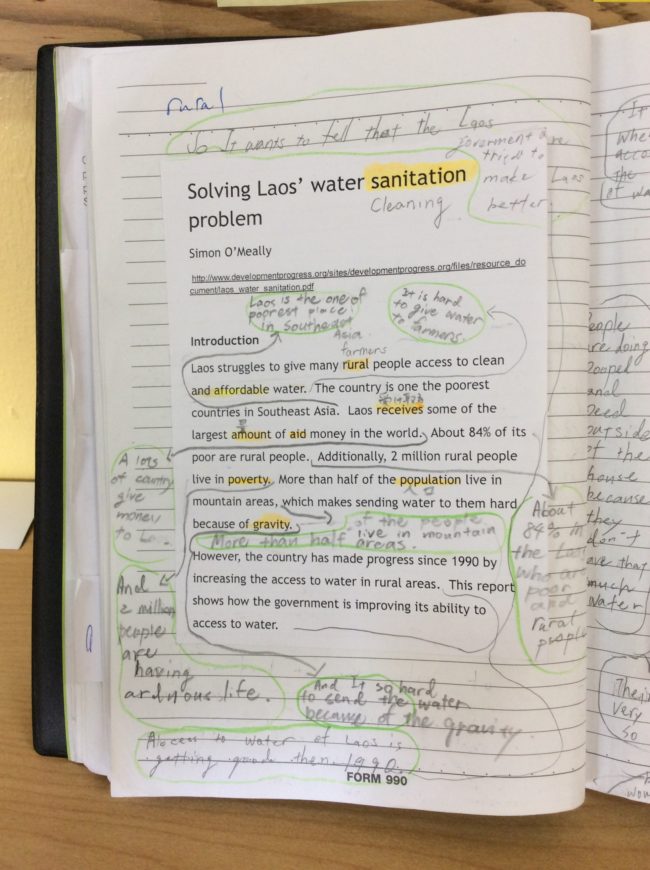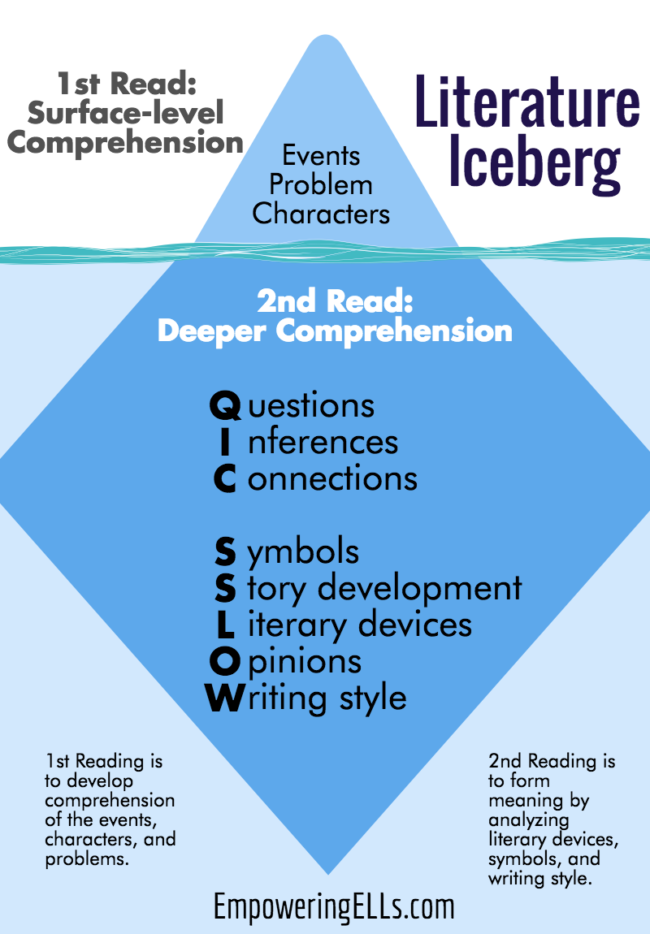Part 5 of WIDA’s Essential Action Series. Click here to return to the first article in the series.
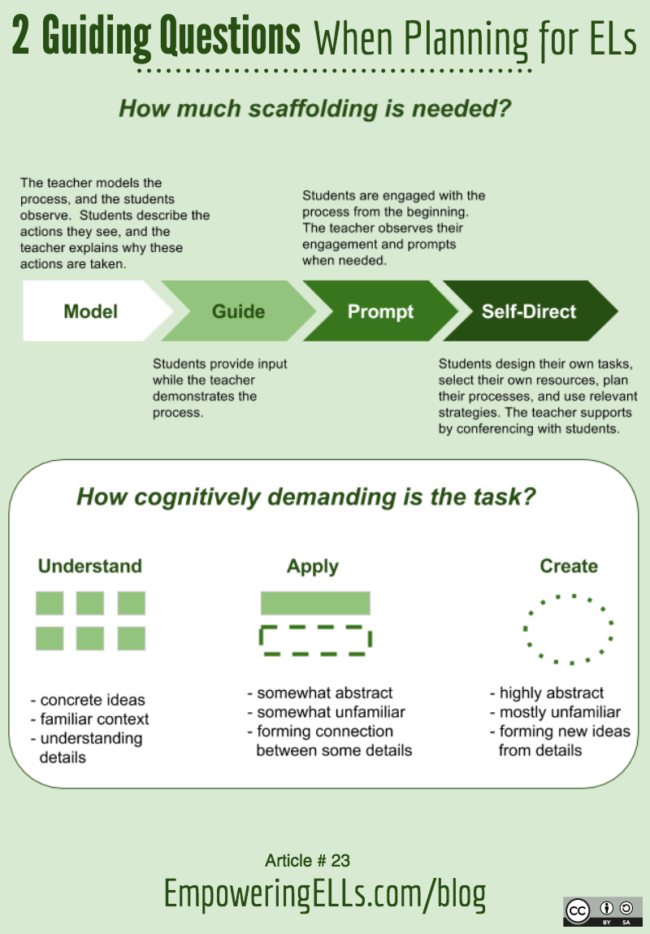
You’re most likely an English language teacher (ELT) if you’re reading this post. Therefore, you most likely have free-reading program where ELs are allowed to read from self-chosen books for fun and without receiving grades. The concept of a “just right book” is the philosophy of matching readers to books that are at the “right level” of language difficulty for them. A book that is easy but not interesting won’t engage the reader, so it’s not the right fit. Similarly, an interesting book that is too difficult is not yet the right reading choice because reading becomes frustrating.
I’d like to borrow the “just-right” philosophy and use it to explain Action 5 in WIDA’s Essential Actions: A Handbook for Implementing WIDA’s Framework for English Language Development Standards (Gottlieb, 2013). This week’s article will highlight the need to match ELs to an appropriate instructional approach that is “just right” for their language profile. Gottlieb introduces Action 5 by saying:
Students’ maturation and age, along with their language proficiency, have to be taken into account in planning instruction and interpreting their performance; in other words, language expectations for ELLs may cluster around a grade-level span rather than a definitive grade. Often it is difficult to pinpoint exact ages or grades when ELLs typically acquire specific words, expressions, and forms of language in English. Language development is variable and contingent on many factors; it is a constellation of factors that determines where students fall on the second language continuum (2013, 34).
The goal of this article is to encourage educators to consider grade-level language development when deciding instructional approaches to employ.
Research Suggests
Some of my fellow ELTs whom I’ve befriended on Twitter and at conferences are required to support ELs from K-12. Other colleagues have a more manageable assignment of working with ELs in just middle or only in high school settings. Some are in my position where they have to teach across both middle and high school.
We have one thing in common despite our different contexts: we understand that different strategies have to be age and language-development appropriate. ELs acquire language and literacy skills at various rates and in different orders (Gottlieb, 2013). This variance is due to students’ ages, motivations, maturity, and educational backgrounds (Lightbown & Spada, 2006; Spolsky, 1989). The research urges educators to consider age and language development when planning, differentiating, and scaffolding instruction.
The first and most important step in working with all students is to develop a positive relationship with them. Once a trusting relationship has been established, teachers can identifying ELs’ language abilities because they inform our teaching approach (Cloud,Genesee, & Hamayan 2009). I’ll share two guiding questions that help me select the specific teaching practices needed based on students’ language development. I’ll also explain how to apply these two guiding questions.
Guiding Question #1: How much scaffolding is needed?
I currently teach 6th, 7th, and 10th graders. The range in their abilities is significant, so I have to carefully consider how much help each grade needs. The 6th graders require a great deal of hand holding to be successful having just left elementary school. They’re also more receptive to “being mothered” because they want to be fully supported in a new academic environment. In contrast, the 10th graders will rebel if I offer too much hand holding because they want nothing more than to prove their independence and competence.
This guiding question reminds me to consider how much scaffolding ELs want and need. I’ve created the visual below to illustrate the distinction in the amount of teacher involvement one can provide. The categories are Model, Guide, Prompt, Self-Direct. My involvement changes depending on the ELs’ needs.
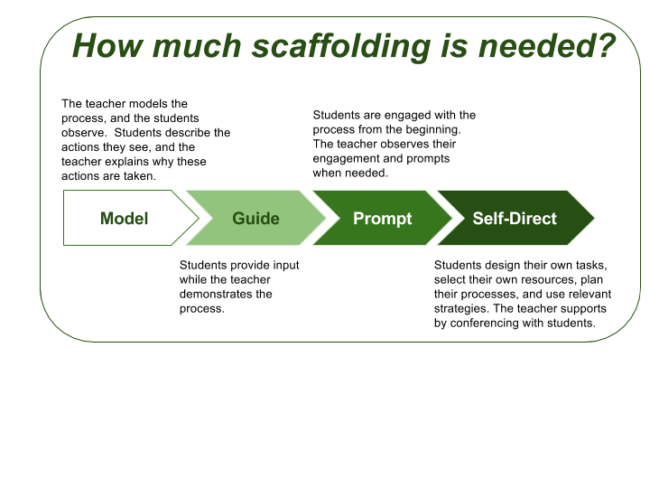
Guiding Question # 2: How cognitively demanding is the task?
This guiding question helps me consider the kind of thinking that students will do. I’ve broken the levels of thinking down into three tiers based on Bloom’s revised taxonomy (Anderson & Krathwohl, 2001). At the Understand phase, students are engaged with minor cognitive tasks characterized by the verbs “remember” and “understand”. Students usually learn concrete ideas within a familiar at this level.
Moving up to the Apply phase, students are required to use prior knowledge and apply it in a somewhat familiar context. The concepts are slightly more abstract and not as familiar. Finally, students entering the Create phase are engaged in cognitively demanding tasks. They will learn things that are unfamiliar and quite abstract. Students need to use prior knowledge to create new understandings. The most important distinction at this phase is the ability to form connections between ideas to create new thinking. This connection-making ability characterizes critical thinking.
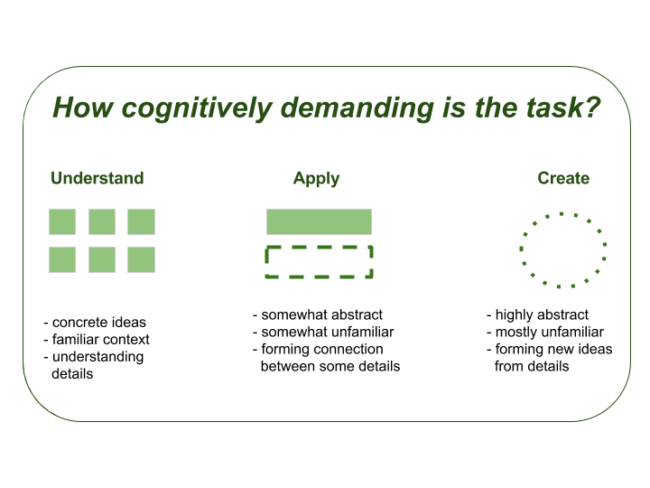
Applying the Guiding Questions
Reading with 6th Graders
The first question reminds me that ELs would benefit from guided practice such as Visible Reading. In this practice, I demonstrate the reading interactions I have with the text and invite the students to apply them in our shared text. I lift one paragraph from the text, provide printed copies, and have students glue it into their English journals.
I have students collaboratively construct the meaning of the text using the demonstrated strategies. These strategies have the ELs slow their reading and promote multiple readings. My ELs then annotate each sentence to demonstrate their understanding. You’ll see this in the video below.
The reason why my 6th graders are receptive to Visible Reading is because it slows the reading down and focuses on their understanding of one sentence before going onto the next. I find younger ELs need to understand one sentence at a time because developing readers need a grasp of the details to be able to construct an overall understanding. This collaborative process integrates the second guiding question because comprehending one sentence is not as cognitively demanding as reading an entire text.
The reason why my 6th graders are receptive to Visible Reading is because it slows the reading down and focuses on their understanding of one sentence before going onto the next. I find younger ELs need to understand one sentence at a time because developing readers need a grasp of the details to be able to construct an overall understanding. This collaborative process integrates the second guiding question because comprehending one sentence is not as cognitively demanding as reading an entire text.
This is an image of Shungo’s annotated text. The image shows his thinking about the text, and the structure requires him and his partner to slow their reading.
Reading with 10th Graders
Reading with 10th graders is distinctively different than with 6th graders because they can handle multiple sentences at a time and deal with the cognitive demands of holding multiple details simultaneously. I continue to have the 10th graders slow their reading by stopping to talk about the section of paragraphs we’ve read aloud. They then annotate the group of paragraphs to demonstrate their understanding. Notice how Lily, a 10th grader, annotates paragraphs while the 6th graders annotate sentences. Both are annotating, but the annotations are based on their language abilities.
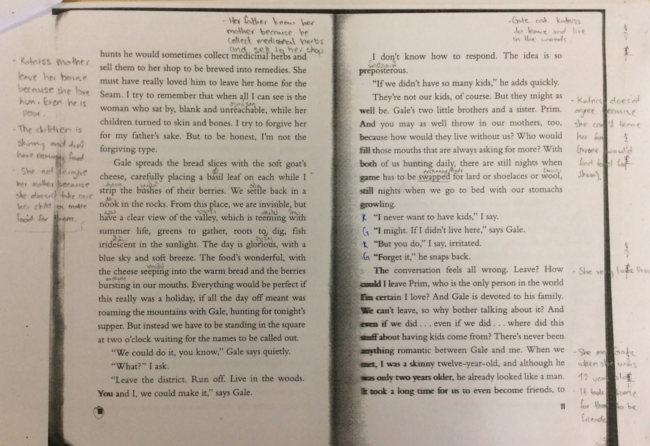
The 10th graders have already internalized many of the reading strategies at this level, so the most appropriate form of support is to prompt them to think more deeply and critically about the text. To help my ELs do this, I use a structure called Literature Iceberg.
The metaphor of an iceberg helps students understand the concept of “going below the surface”. Just like the majority of an iceberg lies beneath the surface of the water, students have to go “below the surface” of the textual details to uncover the text’s deeper meanings.
After we read a series of pages, I ask students to re-read a section of the text to formulate questions or look for particular details. Then, we share our questions and observations as a whole class using the Harkness Method. The student-lead discussions help students answer each other’s questions and form connections between ideas.
Takeaways
I hope that this article reinforces your practice of matching ELs to strategies that consider their language development. I hope that these guiding questions support you in your teaching and offer a clear framework that honors their language development while empowering your ELs.
Next Post
The next article will highlight WIDA’s Action # 6 -referencing language standards with content objectives so that both language and content are learned simultaneously. I’ll share how I integrated language and content standards in collaboration with science and humanities teachers.
References
Anderson, L W. & Krathwohl, R. (2001). A Taxonomy for Learning, Teaching and Assessing: a Revision of Bloom’s Taxonomy. New York. Longman Publishing.
Cloud, N., Genesee, F., & Hamayan, E. (2009). Literacy instruction for English language learners: A teacher’s guide to research-based practices. Portsmouth, NH: Heinemann.
Gottlieb, M. (2013). Essential Actions: A Handbook for Implementing WIDA’s Framework for English Language Development Standards. Madison: Board of Regents of the U of Wisconsin System.
Lightbown, P. M., & Spada, N. (2006). How languages are learned. New York, NY: Oxford UniversityPress.
Spolsky, B. (1989). Conditions for language learning. New York: Oxford University Press.

